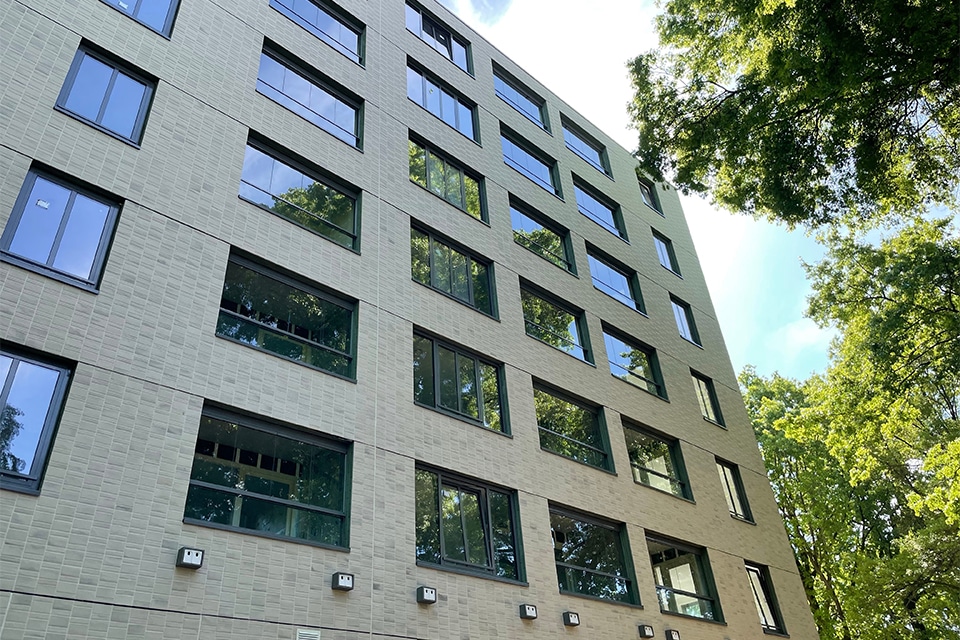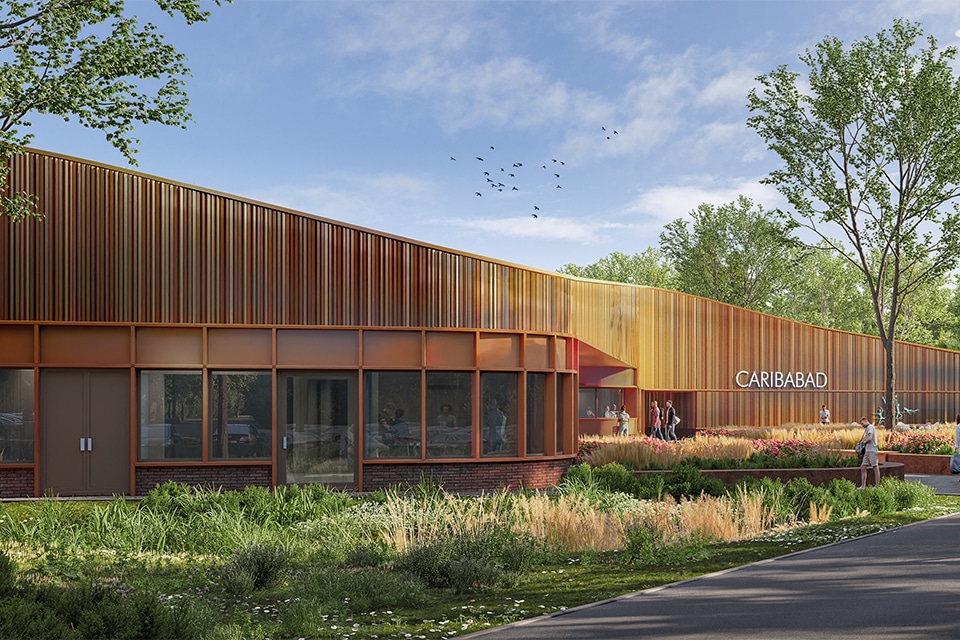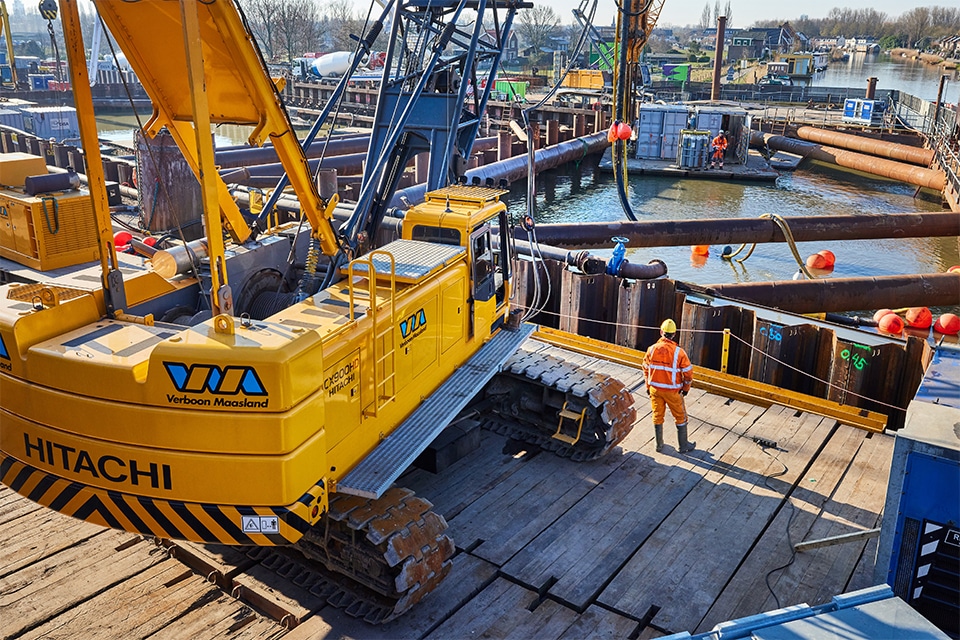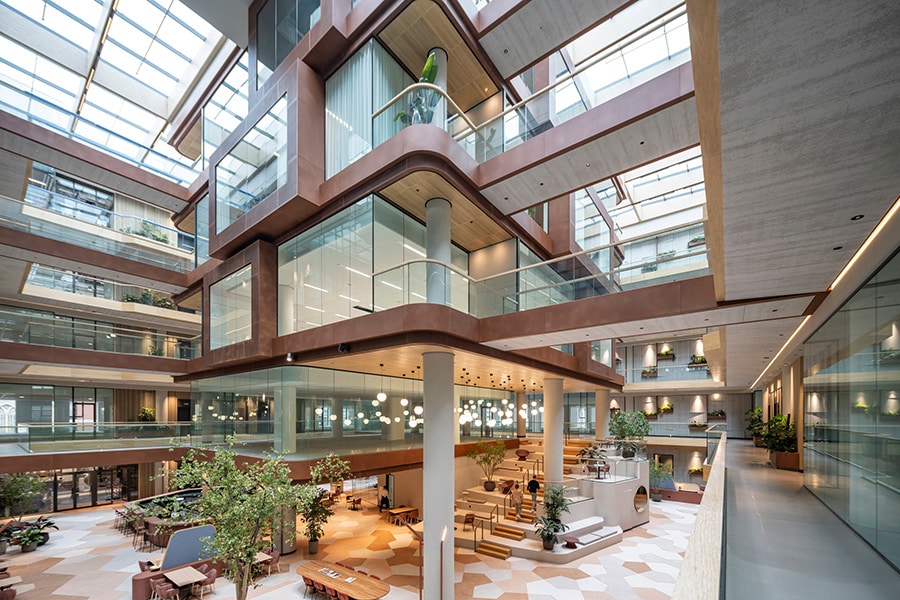
Expert in foundations and commercial flooring works toward ultimate goal: A crack-free concrete floor
At Van Berlo Bedrijfsvloeren, they have been working for several years on a big dream: developing a crack-free concrete floor. From January 2021, these specialized activities are clustered in a new Research & Development department. There, in a well-equipped laboratory, concrete technologists are working daily to get an even better grip on concrete. In this way, the company hopes to achieve the ultimate goal within the next two years: making concrete that does not shrink.
"Concrete is a very essential product for us, of which we pour about half a million cubic meters a year," says commercial director Glenn Verhoef. "Concrete is composed of different aggregates in different qualities. This varies per concrete plant. For example, gravel used in concrete in Alkmaar is different from gravel used in Maastricht. We request these aggregates in advance from concrete plants with which we run large projects. We examine them in our laboratory and on that basis we determine the optimal mixture. Where previously we assumed generalities based on a certain gravel and sand quality, we now request real samples. Together with concrete plants, we thereby improve the mixture for our projects."
Technique in the fingers
Van Berlo has already managed to achieve the ultimate goal of a crack-free floor. With that note that in this pilot, all the preconditions were optimal. "We have already mastered the technology, provided everything around it is right and the price is not an issue," Verhoef said. "Our challenge now is to also get this product done under conditions that are not quite perfect and at a market-based price. That's where our focus will be in the near future. A crack-free floor offers many advantages: less maintenance and repair, higher productivity and greater hygiene. The latter is especially important for the many flooring projects Van Berlo undertakes in the food sector."

Challenge of circular building
Van Berlo values collaboration and has already signed strategic partnership agreements with some contractors to address innovative developments and future opportunities in the market together. Circular construction is one such theme that will receive a lot of attention in the coming years. "Reusing construction debris in concrete presents major challenges, especially where monolithic finished floors are concerned," Verhoef said. "We already sometimes struggle to get different types of round gravel properly incorporated into concrete. Angular crushed rubble as an 'ingredient' becomes difficult, but we certainly don't shy away from that challenge. We, along with a number of contractors, are already doing plenty of research on that."
Collecting, analyzing and learning from data
At Van Berlo, they strive to be even better every day. They do this by continuously gathering and analyzing data about their operations. Verhoef: "Down to the smallest details, we are constantly collecting data in all areas. From sales data to registration of quotation requests, from drafts on the construction site to the moisture of the bed on which we pour concrete. We even have a fully automated system that records weather conditions at a pour. We learn a lot from all that data. If a report of a floor crack comes in, we can immediately retrieve all the data from the day the concrete was poured. Through in-depth analysis, we can sometimes discover patterns that lead back to a particular concrete plant or a specific mix. We can then make adjustments accordingly. That's how we get better every day. And that's how we manage to really put into practice our mission: to strive to exceed our customers' high expectations!"



